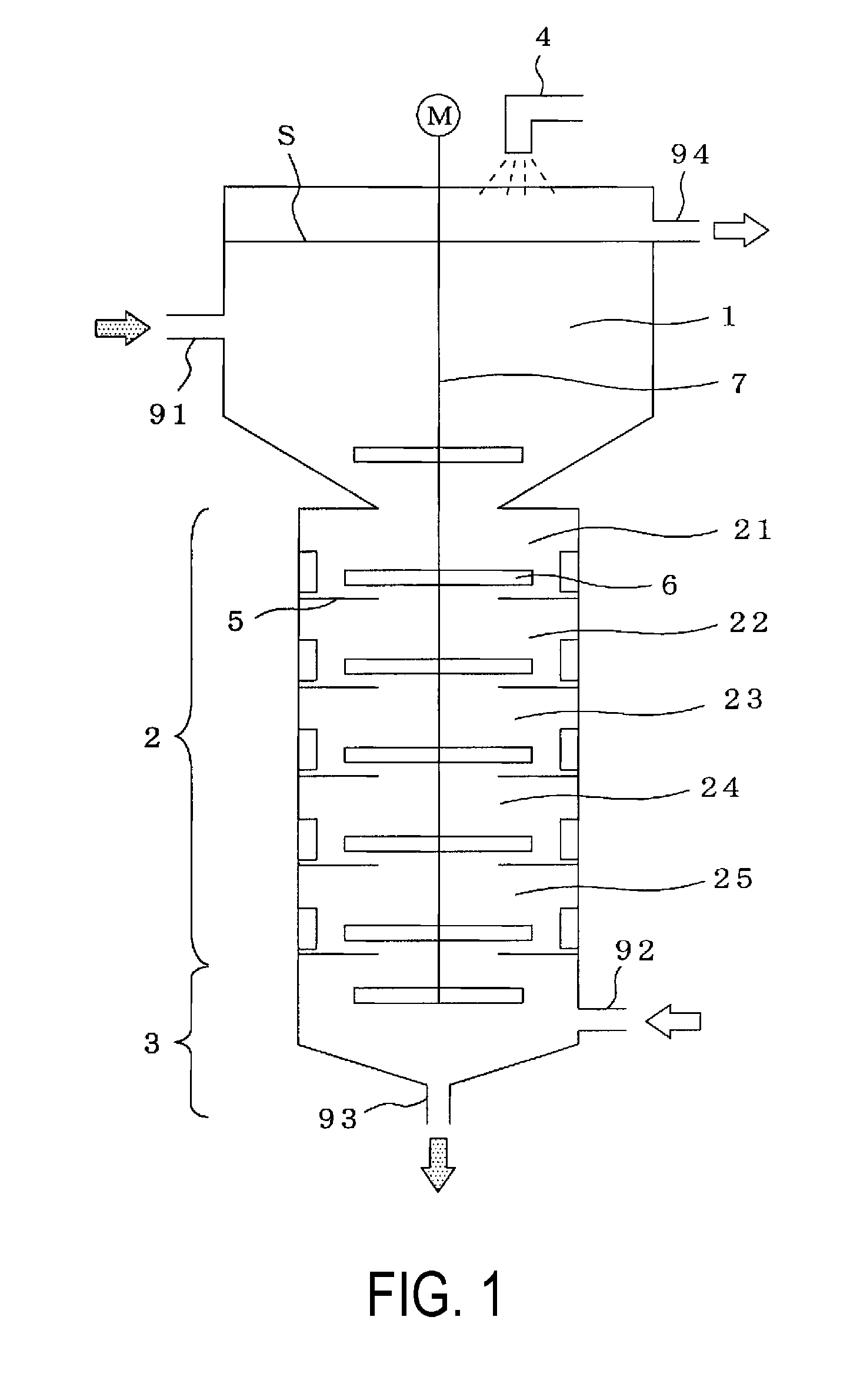Polyarylene sulfide production method and polyarylene sulfide production apparatus
a production method and technology of polyarylene sulfide, applied in the direction of filtration separation, cleaning using liquids, separation processes, etc., can solve the problems of increasing construction costs, complex equipment, and increasing the amount of washing liquid consumed, so as to reduce environmental load, improve product yield, and produce stable results
- Summary
- Abstract
- Description
- Claims
- Application Information
AI Technical Summary
Benefits of technology
Problems solved by technology
Method used
Image
Examples
working example 1
(Step (A), Dehydrating a Mixture)
[0200]First, 6,004 g of NMP, 2,000 g of a sodium hydrosulfide aqueous solution (NaSH; concentration: 62 mass %; containing 28 g of Na2S), and 1,191 g of sodium hydroxide (NaOH; concentration: 74 mass %) were charged into a 20-liter autoclave. The molar ratio of sodium hydroxide to the sulfur source (NaOH / S) was 0.997, and the molar ratio of NaOH / NaSH was 1.012. The sodium hydrosulfide and sodium hydroxide at each of these concentrations contain water such as aqueous water as a residual component.
[0201]After the inside of the autoclave was purged with a nitrogen gas, the inside of the autoclave was gradually heated to 200° C. over the course of approximately four hours while stirring at a revolution speed of 250 rpm of a stirrer so as to distill out 1,006 g of water (H2O), 1,287 g of NMP, and 12 g of hydrogen sulfide (H2S).
(Step (I), Performing Polymerization)
[0202]After step (A) of dehydrating a mixture, the contents of the autoclave were cooled to 1...
working example 2
[0211]Treatment was performed in the same manner as in Working Example 1 with the exception that step (IIIa) was modified as follows.
[0212]Specifically, a washing column having two swivelable nozzles at the column top part of the washing column illustrated in FIG. 1 was used as the washing vessel for performing counter current washing.
[0213]Counter current washing was performed continuously for one hour by feeding a slurry of the same PAS polymer as in Working Example 1 at a rate of 40.0 kg / hr from the slurry feeding port 91 and ion-exchanged water serving at a rate of 8.0 kg / hr from the washing solution feeding port 92. The washing bath ratio was 2. Ion-exchanged water was sprayed from each of the two nozzles toward the surface S of the washing solution at 10 g / min (0.6 kg / hr).
[0214]The discharge rate of the washing drainage discharged from the washing drainage discharge port 94 was 2.0 kg / hr. No floating polymer of PAS was observed in the washing drainage. In addition, the amount ...
PUM
| Property | Measurement | Unit |
|---|---|---|
| temperature | aaaaa | aaaaa |
| temperature | aaaaa | aaaaa |
| temperature | aaaaa | aaaaa |
Abstract
Description
Claims
Application Information
 Login to View More
Login to View More - R&D
- Intellectual Property
- Life Sciences
- Materials
- Tech Scout
- Unparalleled Data Quality
- Higher Quality Content
- 60% Fewer Hallucinations
Browse by: Latest US Patents, China's latest patents, Technical Efficacy Thesaurus, Application Domain, Technology Topic, Popular Technical Reports.
© 2025 PatSnap. All rights reserved.Legal|Privacy policy|Modern Slavery Act Transparency Statement|Sitemap|About US| Contact US: help@patsnap.com


